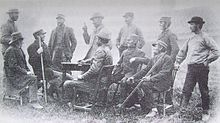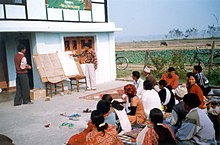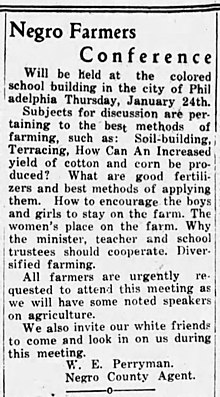Development communication refers to the use of communication to facilitate social development. Development communication engages stakeholders and policy makers, establishes conducive environments, assesses risks and opportunities and promotes information exchange to create positive social change via sustainable development. Development communication techniques include information dissemination and education, behavior change, social marketing, social mobilization, media advocacy, communication for social change, and community participation.
Agribusiness is the industry, enterprises, and the field of study of value chains in agriculture and in the bio-economy, in which case it is also called bio-business or bio-enterprise. The primary goal of agribusiness is to maximize profit while satisfying the needs of consumers for products related to natural resources such as biotechnology, farms, food, forestry, fisheries, fuel, and fiber.
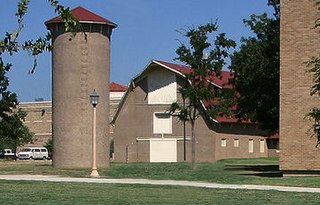
Agricultural education is the teaching of agriculture, natural resources, and land management. At higher levels, agricultural education is primarily undertaken to prepare students for employment in the agricultural sector. Classes taught in an agricultural education curriculum may include horticulture, land management, turf grass management, agricultural science, small animal care, machine and shop classes, health and nutrition, livestock management, and biology.

Participatory rural appraisal (PRA) is an approach used by non-governmental organizations (NGOs) and other agencies involved in international development. The approach aims to incorporate the knowledge and opinions of rural people in the planning and management of development projects and programmes.

Participatory technology development (PTD) is an approach to learning and innovation that is used in international development as part of projects and programmes relating to sustainable agriculture. The approach involves collaboration between researchers and farmers in the analysis of agricultural problems and testing of alternative farming practices.
The Global Forum on Agricultural Research and Innovation (GFAR) is an inclusive global forum, enabling all those concerned with the future of agriculture and its role in development around the world, to address key global needs. GFAR provides an open forum for stakeholders across the agricultural spectrum—ranging from researchers, organizations, and farmers—to participate in collaborative discussion and action around the current and future state of agriculture.
Promoting Local innovation in ecologically oriented agriculture and NRM, known as PROLINNOVA, is an NGO-initiated international learning network to promote local innovation in ecologically oriented agriculture and Natural resource management. It is a "Global Partnership Programme" under the umbrella of the Global Forum on Agricultural Research (GFAR). The focus of PROLINNOVA is on recognising the dynamics of indigenous knowledge and enhancing capacities of farmers to adjust to change – to develop their own site-appropriate systems and institutions of resource management so as to gain food security, sustain their livelihoods and safeguard the environment. The essence of sustainability lies in the capacity to adapt.
The Farmer-to-Farmer (F2F) Program is funded by the US Agency for International Development through the US Farm Bill to assist developing countries, middle-income countries, and emerging markets around the world to increase farm production and incomes. It promotes sustainable economic growth, food security and agricultural development worldwide. Volunteer technical assistance from US farmers, agribusinesses, cooperatives, and universities helps developing countries improve productivity, access new markets, build local capacity, combat climate change and conserve environmental and natural resources. Farmer-to-Farmer also aims to increase the American public's understanding of international development issues and programs and international understanding of the U.S. and U.S. development programs.
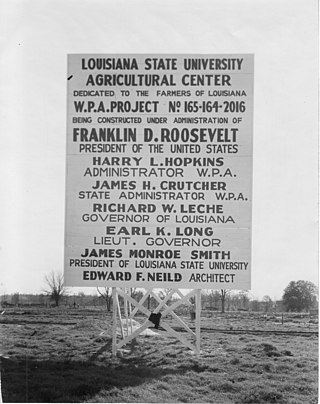
The Louisiana State University Agricultural Center, or the LSU AgCenter, is an agriculture research center associated with the Louisiana State University System and headquartered in Baton Rouge, Louisiana. The center conducts agricultural-based research through its Louisiana Agricultural Experiment Station and extends the knowledge derived from research to the people of the state of Louisiana through its Louisiana Cooperative Extension Service. The LSU AgCenter, one of 11 institutions within the Louisiana State University System, shares physical facilities with the LSU A&M campus.
Farmer Research Committees are an approach to community organizing and agricultural extension that provide rural communities and farmer organizations in developing countries with adaptive research and technology testing services run by volunteer farmers. This approach to agricultural innovation is used in international development and rural community development for improving adoption of appropriate technology and the development of sustainable agriculture. The approach involves collaboration and joint decision-making among extension agents, farmers and researchers to develop locally acceptable farming practices and accelerate their adoption. Farmer Research Committees also produce a broad set of benefits that are generally referred to as empowerment,including the increased self-esteem and effectiveness of farmers to organise and negotiate with extension service and agricultural input providers, market chain actors, banks and politicians.

Isabela State University is a public university in the province of Isabela, Philippines. It is mandated to provide advanced instruction in the arts, agricultural and natural sciences as well as technological and professional fields. The main campus is located in Echague, Isabela.
The Irrigated Rice Research Consortium (IRRC) focuses on agricultural research and extension in irrigated rice-based ecosystems. In partnership with national agricultural research and extension systems (NARES) and the private sector, the IRRC provides a platform for the dissemination and adoption of natural resource management (NRM) technologies in Asian countries. The IRRC is currently active in 11 countries: Bangladesh, Cambodia, China, India, Indonesia, Laos, Myanmar, the Philippines, Sri Lanka, Thailand, and Vietnam. It aims to strengthen NARES-driven interdisciplinary research, link research and extension, facilitate rice farmers' uptake of technological innovations, and enable environmentally sound rice production to expand to feed growing populations.
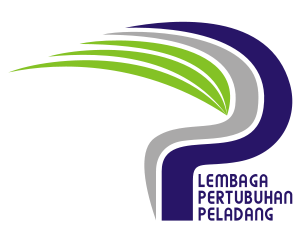
Farmers' Organization Authority (FOA) is a Malaysian government statutory body under the Ministry of Agriculture and Agro-based Industries, Malaysia.
International Institute of Rural Reconstruction, also known as IIRR is a non-profit organization that helps empower rural communities by making them self-sufficient. By offering programs across health, education, environment, and livelihood, its goal is to have rural communities take charge of their own success. The organization has delivered programs to more than 40 countries in Asia, Africa, and Latin America and directly impacted the lives of over 19 million people as of 2019.

The Cooperative State Research, Education, and Extension Service (CSREES) was an extension agency within the U.S. Department of Agriculture (USDA), part of the executive branch of the federal government. The 1994 Department Reorganization Act, passed by Congress, created CSREES by combining the former Cooperative State Research Service and the Extension Service into a single agency.

The African Forum for Agricultural Advisory Services (AFAAS), is a continental organization for strengthening Agricultural Extension and Advisory Services (AEAS) in Africa. It operates within the framework of the Comprehensive Africa Agriculture Development Programme (CAADP), a venture of the African Union in the New Partnership for Africa's Development (NEPAD). AFAAS is an autonomous subsidiary of the Forum for Agricultural Research in Africa (FARA).
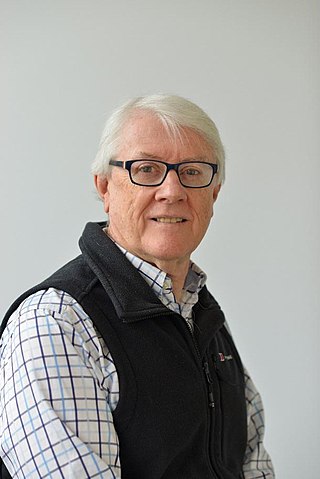
Raymond L. Ison is an Australian-British cybernetician, systems scholar/scientist, and Professor of Systems at the Open University in the UK. He is currently President of the International Federation for Systems Research (IFSR). He was also Professor Systems for Sustainability at Monash University, and fellow at the Centre for Policy Development, and President of the International Society for the Systems Sciences in the year 2014-15. He is known for his work on systems praxeology within rural development, sustainable management, systemic governance and the design and enactment of learning systems.

The Uganda National Entrepreneurship Development Institute (UNEDI) is a privately owned national resource development institution in Uganda whose focus area is entrepreneurship education, training and research. The institute provides training techniques, faculty support, consultancy, research as well as teaching and development of entrepreneurship training materials.

The Lilongwe University of Agriculture and Natural Resources (LUANAR) is a university outside Lilongwe, Malawi. It was formed in 2011 by a merger between Bunda College of Agriculture of the University of Malawi and Natural Resources College (NRC).
Digital agriculture, sometimes known as smart farming or e-agriculture, is tools that digitally collect, store, analyze, and share electronic data and/or information in agriculture. The Food and Agriculture Organization of the United Nations has described the digitalization process of agriculture as the digital agricultural revolution. Other definitions, such as those from the United Nations Project Breakthrough, Cornell University, and Purdue University, also emphasize the role of digital technology in the optimization of food systems.
